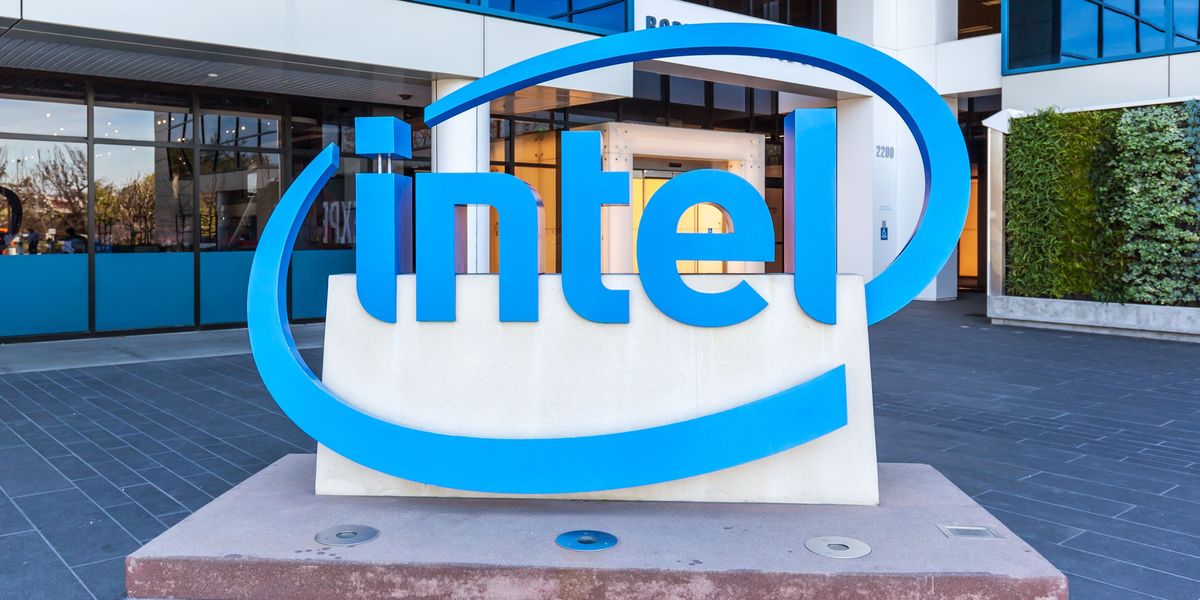Will more funding be needed to keep Intel competitive?
On 1 August 2024, Intel announced financial results for the second quarter of 2024. They weren’t pretty; the company’s stock dropped more than 25 percent as it announced an aggressive plan to cut costs, including layoffs that will impact 15 percent of its entire workforce.
You can’t trust capitalism to take care of your national security
they should nationalize intel if they really care about chip independence
This is the way. This technology is too critical to our future to leave in the hands of the private sector at this point.
Injection of money more often than not does not solve the fundamental problems that lead a business to failure or in this case poor performance. The causes of the poor decisions along the way must also be addressed.
An engineer should be at the helm. MBAs fuck tech companies up.
Pat Gelsinger, Intel’s CEO, is an engineer. He was the lead architect of the 80486 processor. If there’s one thing Intel can’t be accused of, it’s having a CEO who doesn’t understand engineering. I don’t know how good a leader he is, but he does understand designing microprocessors, and he is picking up the pieces from years of complacent MBA types before him.
They brought him in to fix things, after a gaping finance moron named Bob swan took it after Brian krzanich pushed gelsinger out after he rescued it in the 2000s by developing the core series after the pentium 4 failed.
Brian krzanich fiddled because amd was on fire and he thought he could keep arm at bay. Bob swan didn’t understand anything so he just cranked they buybacks.
It’s a nightmare, and it’s just getting worse, their engineering management went to hell because internal politics beat everything else.
Intel’s current CEO is Pat Gelsinger, he’s an engineer who was the chief architect of the i486.
It’s not just who’s at the top, the issue is that the company has gotten too big. There’s a reason why AMD with such a lower staff count has managed to leapfrog Intel.
I suspect Intel has a broader product range than AMD to justify the headcount, but I’m not sure where the extra resources should go.
Their networking chipsets were gold-standard in the 100M and Gigabit era, but their 2.5G stuff is spotty to the point Realtek is considered legit.
They’ve pulled back from flash, SSDs and Optane.
There must be some other rich product lines that they do and AMD doesn’t
AMD doesn’t have fabs, and contracts that work out to TSMC. Intel has fabs worldwide. That alone makes Intel a much more capital-intensive, labor-intensive business.
There’s a reason why AMD with such a lower staff count has managed to leapfrog Intel.
Jim Keller was a pretty big reason.
Intel had Jim Keller, and then Jim Keller left prematurely because of political infighting within Intel.
He could barely get anything done and was blocked all the time, because people thought his longer term goal was to become Intel’s next CEO.
His Royal Core project, which looked promising, has been cancelled by Pat Gelsinger.
Intel had a goose that laid golden eggs, killed it, then threw all the eggs they had into a volcano.
Intel had such a huge competitive lead during AMDs Bulldozer debacle. I assumed they were still making internal advancements and just sitting on them since there wasn’t any need to push the envelope while they had basically no competition.
Now I’m wondering if they did the typical US corporation thing of laying off their actual talent and using their obscene profits from this period for bonuses for their corporate officers.
Mostly, it’s more that they had massive infighting, different projects kept fighting each other because everybody wanted to own “the next big thing”, so they kept smothering other projects in their beds.
Read about knights landing, it was a beautiful piece of engineering that was eaten by politics.
Imagine a knights landing Ai core.
There’s a reason why AMD with such a lower staff count has managed to leapfrog Intel.
AMD just makes the designs and farms out manufacturing. Intel has to make the designs and manufacture the chips themselves.
That should be an advantage for Intel, yet here we are
Would a great time to buy all that stock for so cheap!
Ohh wait these clowns blew 100b USD on buyback already, got no money, their core biz is tanking but hey
Atleast they are getting taxpayer money for “fabs”
Cheers suckers
And took how much from the CHIPs act?
I don’t know mate… 35b?
Keep me honest folks
Intel received the largest benefit from the CHIPS Act with $8.5b
https://www.theverge.com/24166234/chips-act-funding-semiconductor-companies
Damn gonna need way more to fix the Intel than that
Privatize the profits, socialize the losses.
deleted by creator
Nah we want Intel to live so that AMD still has real competition, same reason I’m in favour of Intel getting into the GPU market.
Company that produces backdoored CPUs is in financial straights.

Funny, I speculated to a friend about a year ago that intel’s general fuckery might cause them problems not to far down the road , and here they are. Hmm, if only I had money to back that up… I’d probably have more money or whatever.
Or maybe not so much since I think just about everyone saw this coming. My friend certainly did.
what’s been going on with intel the last few years? in terms of their troubles that this extremely vague article that could have been 4 sentences says nothing about.
They’ve had fab problems for years, in that it cost them a ton on money and much longer than desired to shrink nodes, so they’ve fallen from a leader in fab production to being behind.
Not to mention there’s not much money to be made from fabs, unless your tsmc.
AMD, Qualcomm, Nvidia, Google, Apple, are all huge tech companies that design their own cutting edge chips, and only Samsung is another company that both designs and produces chips.
And this is why I don’t understand why Nvidia is valued so highly on the stock market. It’s obvious that other players are developing chips for Ai as well, and it’s also obvious that the benefits from Ai are just shallow stuff like helping the consumer do things with their voice instead of clicking buttons.
Sure we got Ai to make pics better, and Ai to help with tasks, but if it wasn’t there, we wouldn’t even think twice about it.
Chat gpt seems to be the best product so far.
And this is why I don’t understand why Nvidia is valued so highly on the stock market.
Don’t hold your breath waiting for anything about the stock market to make sense.
it’s also obvious that the benefits from Ai are just shallow stuff like helping the consumer do things with their voice instead of clicking buttons.
Not obvious to the billionaires and hedge funds who own most of the stock market.
Never forget that wealth and power doesn’t automatically equal intelligence and competence…
got it, thanks
They’ve had fab problems for years
Just checking: do you mean fabrication problems or FABULOUS problems? 😛
They’ve had delays, manufacturing problems, design problems, strained relationships with OEMs, political infighting, brain drain, cancelled projects, huge security vulnerabilities, less interest in their (opened up to non-intel customers) foundry than expected, and their nodes – despite not actually being far behind TSMC and in some areas better – are vastly more expensive.
This is all on top of the fact that Intel is structured in a way that they cannot make money unless they are a monopoly. And now they’re no longer a monopoly.
welp, good riddance to bad rubbish.
did they get antitrusted?
did they get antitrusted?
No, AMD just had an absolutely staggering recovery.
Before AMD recovered, high-performance CPU manufacturers that fell behind had a 100% track record of fading into complete obscurity or going bankrupt.
AMD sold everything they had, including their fabs, they put their graphics division into what was effectively life support by only making a very cheap to manufacture Polaris chip (RX 480/580 cards and their derivatives) and a (unsuccessful) vega chip for several years, they pleaded with Microsoft and Sony to be used in their consoles for only the most pathetic margins that Intel and Nvidia would scoff at, and they got to work on Zen, putting everything into it.
If Zen failed, AMD would’ve went bankrupt, without question. Everyone expected bankruptcy from AMD. Their stock price went to under $2. Certainly nobody expected Zen to be as good as it was. They went from multiple generations behind Intel, to ahead in practically everything but gaming (which would take a couple more years) overnight.
Then, a moment of excellent luck for AMD, and poor luck for Intel, Spectre and Meltdown (two devastating vulnerabilities for Intel CPUs), accelerated the enterprise sector’s switch to AMD.
thanks for the write-up.
i knew something had happened there but only read half headlines.
Thats an amazing story and gokd to know, thanks for clarifying and condensing it for me.
have a good one!
good riddance to bad rubbish.
Well, that’s the thing. They are kind of “too big to fail” and Intel is too important for the US to let it fail or even get behind the curve.
There’s probably more government money headed their way. Just like there is more foreign government money headed to their competitors in other countries. It might become more of a subsidy battle between governments than a money-making competition between companies.
the curve is firmly set by Taiwan, Intel is playing catch up at best.
Intel is just the right size to fail.
I don’t think that’s necessarily true.
Much of Intel’s foundry future is bet on Intel 18A, the company’s next leading-edge semiconductor production process. This “1.8-nanometer” production process will combine multiple Intel innovations including 3D hybrid bonding, nanosheet transistors, and back-side power delivery. Demler says that, if all goes to plan, Intel’s 18A should compete directly with, or even exceed, TSMC’s upcoming 2N process technology.
“bet”, “next”, “will”, “if”, “plan”, “should”.
that’s a lot of faith to place in the unproven optimistically hypothetical next steps of a company way behind the firmly established innovation, dominance and reliability of TSMC semi fab.
Semiconductor manufacturing has gotten better over time, with exponential improvement to transistor density, which translates pretty directly to performance. This observation traces back to the 60’s and is commonly known as Moore’s Law.
Fitting more transistors into the same size space required quite a few technical advancements and paradigm shifts. But for the first few decades of Moore’s law, every time they started to approach some kind of physical limit, they’d develop a completely new technique to get things smaller: photolithography moved from off the shelf chemicals purchased from photography companies like Eastman Kodak to specialized manufacturing processes, while the light used went higher and higher wavelength, with the use of new technology like lasers to get even more precisely etched masks.
Most recently, the main areas of physical improvement has been in using extreme ultraviolet (aka EUV) wavelengths to get really small features, and certain three dimensional structures that break out from the old paradigm of stacking a bunch of planar materials on each other. Each of these breakthroughs was 20 years in the making, so the R&D and the implementation details had to be hammered out with partners in a tightly orchestrated process, to see if it would even work at scale.
Some manufacturers recognized the huge cost and the uncertainty of success in taking stuff from academic papers in the 2000s and actually mass producing chips in 2025, so they abandoned the leading edge. Global Foundries, Micron, and a bunch of others basically decided it wasn’t worth the investment to try to compete, and now manufacture in those older nodes, without necessarily trying to compete on the newest nodes, leaving things to Intel, Samsung, and TSMC.
TSMC managed to get EUV working at scale before Intel did. And even though Intel beat TSMC to market with certain three dimensional structures known as “FinFETs,” the next 2 generations after that, TSMC managed to really shove them in there at higher density, by using combining those FinFETs with lithography techniques that Intel couldn’t figure out fast enough. And every time Intel seemed to get close, a new engineering challenge would stifle them. And after a few years of stagnation, they went from being consistently 3 years ahead of TSMC to seeming like they’re about 2 years behind TSMC.
On the design side of things, AMD pioneered chiplet-based design, where different pieces of silicon could be packaged together, which allowed them to have higher yields (an error in a big slab of silicon might make the whole thing worthless) and to mix and match things in a more modular way. Intel was slow to adopt that, so AMD started taking the lead in CPU performance per watt.
It’s difficult engineering challenges, traceable back to decisions made in the past decades. Not all of the decisions were obviously wrong at the time, but nobody could’ve predicted at the time that TSMC and AMD would be able to leapfrog Intel based on these specific engineering challenges.
Intel has a few things on the roadmap that might allow it to leapfrog the competition again (especially if the competition runs into their own setbacks). Intel is ramping up use of EUV in its current processes, are ramping up a competing three dimensional structures they call RibbonFET to compete with TSMC’s Gate All Around (both of which are supposed to replace FinFETs) and they’re hoping to beat TSMC to backside power delivery, which is going to represent a significant paradigm shift in how chips are designed.
It’s true that in business, success begets success, but it’s also true that each new generation presents its own novel challenges, and it’s not easy to see where any given competitor might get stuck. Semiconductor manufacturing is basically wizardry, and the history of the industry shows that today’s leaders might get left behind, really quickly.
What always happens when a dipshit with a business degree starts making decisions about technical problems
haha.
oh management,
unnecessary avatar
Intel’s primary product is asking for government handouts.









